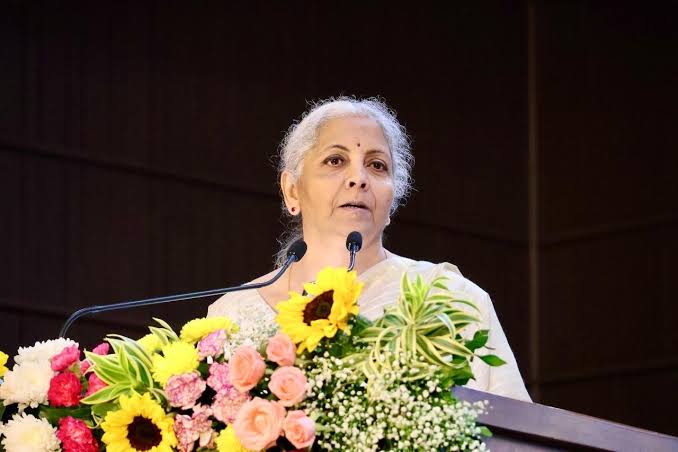The Indian government is closely monitoring trade negotiations before making any decision on potential US tariffs, Finance Minister Nirmala Sitharaman said on Thursday. Her statement comes in light of US President Donald Trump’s reiteration of his plan to impose reciprocal tariffs on countries that levy high taxes on American goods.
Sitharaman highlighted that Commerce Minister Piyush Goyal is currently in the United States for discussions regarding the matter. India will be careful and thoughtful about the result of the negotiations and will carefully consider the results before ever taking a stance, she also said. The government remains committed to safeguarding India’s economic interests and ensuring that any decision made aligns with the country’s trade priorities.
The finance minister made these remarks at an industry event in Andhra Pradesh, where she emphasized the need for thorough discussions to mitigate any negative impact of the proposed US tariffs on India. She spoke at a meeting in Visakhapatnam where she promised that India is very much talking to American officials including representatives from the United States Trade Representative. She wants to sort out concerns about India’s exports and trade rules and really works hard at it.
Trump’s plan to introduce reciprocal tariffs aims to counter what he describes as unfair trade practices by other nations. These include things like non monetary trade barriers, things that make it hard for us to sell to other countries like government subsidies that basically put sellers at a disadvantage who are American, as well as VAT [Value Added Tax] systems in different countries which can also hurt American goods. According to the US President, such tariffs would either compel foreign countries to lower their tariffs on American products or encourage them to shift their manufacturing operations to the US. The new tariff policy is expected to take effect from April 2, potentially impacting India’s trade dynamics with the United States.
While India remains hopeful for a balanced trade outcome, experts warn that these tariffs could have significant consequences for Indian exporters, particularly in key sectors such as textiles, pharmaceuticals, and information technology. The Indian government is being very careful, going for diplomatic negotiations first before they commit to anything.
Sure, global financial markets have already reacted pretty strongly to Trump’s recent moves when it comes to adding tariffs. Mexico and Canada certainly are taking hits from this. This has really sparked concern among folks who invest money, which has resulted in volatility in the financial markets and a drop in confidence among consumers. Businesses are super confused right now by what future trade policies might look like. That folks are hesitating a lot about when and where to hire new people or invest more money right now could really slow the whole economy growth down a bit more.
Some of the tariffs that the US put in its price book were taken off later because the stock market got upset. However, the overall policy remains in place, with a temporary suspension in effect until April 2. Observers think this is a really good time to have fresh negotiations that could result in some adjustments or some special deals for different countries including India.
Trade analysts believe that Trump’s tariff strategy is aimed at reducing the US trade deficit, which reached a record $131.4 billion in January, marking a 34% increase. While a bit of this deficit is certainly because of a big increase in gold we’re importing, it seems like most businesses are also raising their imports on account of new tariffs as well. If these tariffs go forward they could really mess with trade flows and really complicate things for economies that are just starting to pick up steam, like India.
Amidst these developments, there is growing speculation that ongoing trade talks between India and the US could pave the way for a broader trade agreement later this year. India has been working towards securing favorable trade terms with the US, particularly in sectors that could be affected by the proposed tariffs. The Indian government is keen on ensuring that the country’s export potential remains strong and that domestic industries do not face undue pressure due to external trade policies.
As people are still discussing things, India’s biggest aim is to have a balanced relationship trading with the United States—just fair trade. The government is thinking of all kinds of creative ways to negotiate better terms and to make sure the country’s economy doesn’t stumble along the way. With all sorts of international trading relationships swiftly changing, being an active participant and partaking in important negotiations is key if India is to define the future of trade relations with the US and other major economies.
For now, the Indian government remains vigilant, awaiting the outcome of the negotiations before formulating its next course of action. Over the next few weeks it will be really important for India to figure out how to navigate new trade rules and make sure that its economy stays strong when stuff is changing so fast on the international policy level.

1 Comment
Pingback: India to Closely Watch US Trade Talks Before Deciding on Tariffs: FM Sitharaman - YPBB News India